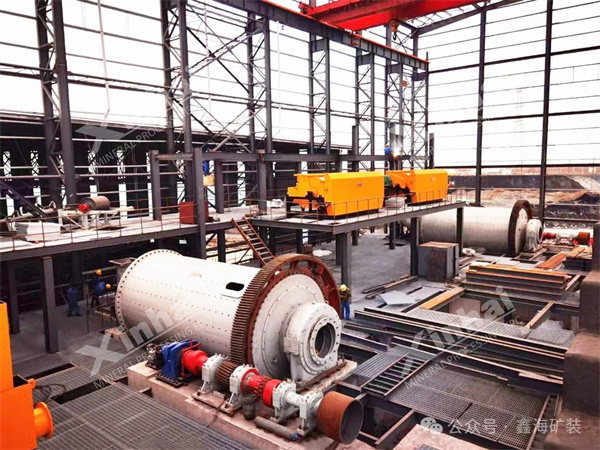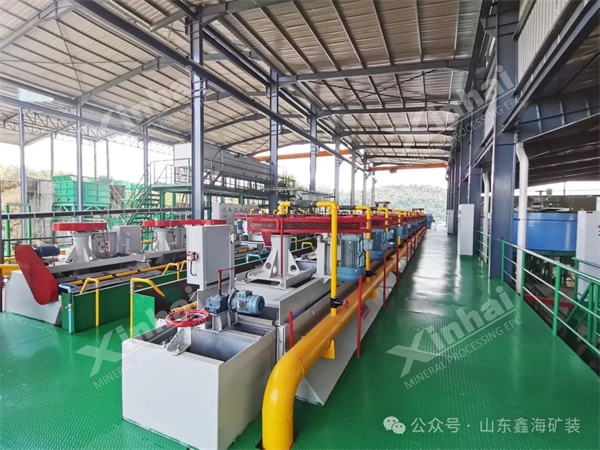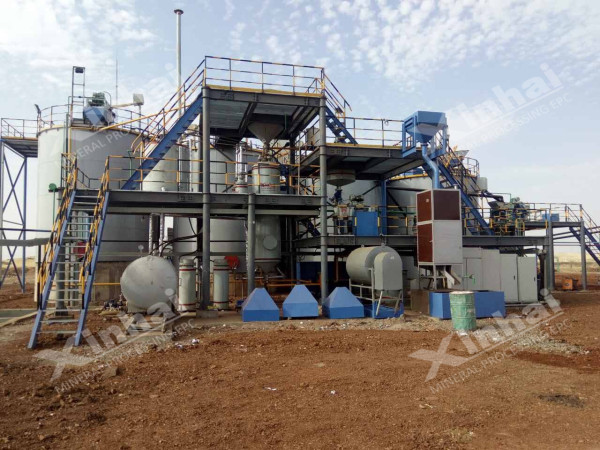If you want to know more information (such as product/process price, etc.), please contact us 24-hour telephone
Quartzite gold mines account for approximately 22% of global gold resources. The presence of fine gold particles (0.001-0.01mm) and encapsulated gold characteristics significantly increases extraction difficulty. As an EPCM+O service provider with 30 years of experience in the mineral processing field, we will detail the key technical points and efficiency enhancement solutions for extracting gold from quartz ore based on multiple project experiences.
In the process of extracting gold from quartz ore, the crushing and grinding stage is a crucial first step. We employ a three-stage closed-circuit crushing process to precisely control the ore particle size, laying a solid foundation for subsequent gold liberation and extraction.
Coarse Crushing: Jaw crusher (particle size ≤300mm)
Medium Crushing: Cone crusher (particle size ≤50mm)
Fine Crushing + Screening: High-pressure roller mill + high-frequency screen (-0.074mm accounts for 65%-75%).
To further enhance the efficiency of the crushing and grinding system, we have introduced JKSimMet simulation technology. Through precise simulation and optimization, milling energy consumption is significantly reduced by 18%-25%.

Gold often coexists with pyrite and arsenopyrite in quartz ore, which poses significant challenges for gold extraction. To address this, we specifically utilize differentiated targeted flotation processes that accurately capture gold minerals, effectively overcoming the interference from associated minerals and achieving efficient gold enrichment.
During the roughing phase, butyl xanthate and pine oil work synergistically under conditions of pH=8.5-9.2 to selectively collect sulfide minerals, prioritizing the flotation of sulfide minerals such as pyrite and arsenopyrite that coexist with gold. In the scavenging stage, a combined depressant (CaO + Na₂SiO₃) effectively suppresses the flotation of gangue minerals like quartz while precisely controlling the pulp concentration at 28%-32%, further enhancing the specificity and efficiency of flotation, allowing for smooth separation of gold minerals during the process.

After processes such as flotation, the concentration and dewatering stage is equally important for gold recovery and comprehensive resource utilization. We adopt a high-efficiency combination of deep cone thickeners and ceramic filters to ensure effective material separation and precise resource recovery.
The deep cone thickener can elevate underflow concentration to ≥65%, effectively concentrating materials like gold concentrates, providing a high-concentration material basis for subsequent filtration and drying processes. The ceramic filter reduces filter cake moisture content to ≤12%, significantly decreasing water content in materials, facilitating subsequent storage and transportation.
Additionally, we strictly control precious liquid loss rates to <0.5%, maximizing the recovery of valuable components like gold while avoiding resource waste. Furthermore, we have thoughtfully configured an online cyanide monitoring system with a detection accuracy of up to 0.01 ppm.
Based on the ore characteristics of quartz mines, we customize CIP or CIL leaching solutions for extracting gold from quartz ore, precisely matching leaching needs for ores with different grades to achieve efficient gold recovery.
For high-grade ores (>3g/t), the CIP process is ideal. This process can achieve an adsorption efficiency of 92%-95% within a leaching time of 24-36 hours, fully recovering gold from high-grade ores.
For low-grade ores (1-3g/t), the CIL process is more advantageous; within an 18-24 hour leaching time, adsorption efficiency can reach 88%-92%, effectively increasing gold recovery from low-grade ores.
Notably, we have introduced an innovative resin adsorption process that significantly reduces cyanide usage by 40%, not only lowering production costs but also minimizing cyanide pollution to the environment, providing robust support for green production in extracting gold from quartz ore.

The desorption electrolysis system is a key link in the gold recovery process; we employ a high-temperature high-pressure desorption tower that achieves efficient desorption and recovery of gold through precise parameter control.
The desorption solution consists of 0.5% NaOH and 0.2% NaCN; under conditions of 135±5°C temperature and 350 kPa pressure, the desorption rate of gold reaches ≥98.5%, ensuring complete desorption from loaded carbon. The accompanying electrolysis tank produces gold sludge with purity reaching 85%-90%. Following subsequent refining processes, purity can reach up to 99.99% national standard gold bars, delivering tangible economic benefits to enterprises while ensuring efficient value conversion at the end stage of extracting gold from quartz ore.
In the comprehensive process of extracting gold from quartz ore, ecological disposal of tailings is a responsibility we steadfastly uphold. We utilize cyanide tailings harmless treatment (SO₂/air method) to effectively eliminate harmful components in cyanide tailings, preventing environmental pollution. Additionally, we employ dry stacking + impermeable systems (HDPE membrane ≥1.5mm) to ensure safety and stability in tailings storage facilities while preventing leachate generation.
Through an Engineering Procurement Construction Management (EPCM) model, we provide one-stop efficiency enhancement solutions for projects extracting gold from quartz ore, covering key aspects such as mineral processing testing, process design, equipment selection, and cost control to comprehensively improve project benefits and competitiveness.
During the mineral processing testing phase, we utilize MLA mineral liberation analysis and column leaching tests to accurately analyze ore properties, providing scientific basis for subsequent process design. In the process design phase, we configure advanced Aspen process simulation systems to accurately simulate and optimize the entire production process, ensuring efficiency and rationality in operations. For equipment selection, we equip online particle size analyzers (Malvern) to monitor ore particle size in real time, providing strong support for precise control during production processes. In terms of cost control, through refined management and optimized resource allocation, processing costs per ton can be reduced by 10%-15%, significantly enhancing project profitability.
This comprehensive approach ensures that our clients benefit maximally from their investments in extracting gold from quartz ore while adhering to sustainable practices in mining operations.